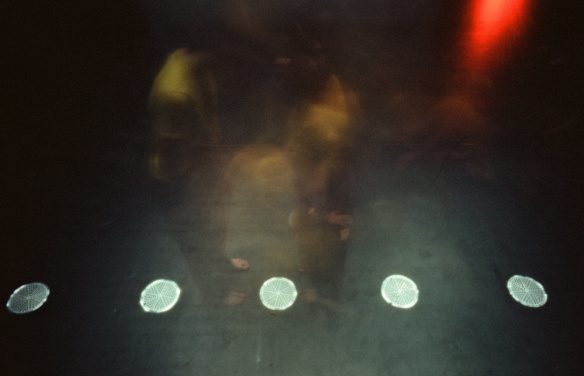In January 2025 – a year after starting the Residuals series, I used performance and long exposure photography to record light – its reflection from the surfaces of moving bodies, as a residual – including darkness and shadow too! Here are presented these ‘light graphs’ from the session at Goldsmiths CI at Goldsmiths, University of London on Saturday 18 January.
To make the photographs, I used long exposure film photography with a pinhole camera. The exposure time was about 2 minutes for a single image. The resulting photographic negatives are 12×6 cm (‘medium format’) and there are six photographs or exposures.
For each of the six images then I danced with one other person ie, a duet. I’ve included the first name of he other dancer in the duet, the exposure time and the chronological time for each photograph. Thank- you to the other six dancers for their participation.
There was a simple score for each performance which involved holding a particular stance for the opening. For example, standing with heads together or sitting back to back for a held opening stance . The duet then used contact improvisation techniques until the ending which was a feeling in me, of the length of time having elapsed and incorporation of movement. In a sense, I lead the beginning and the ending of the dance.
The photographs were made in the George Wood theatre at Goldsmiths which has a black floor and surrounds. It’s ideal for the exposures as there is little light reflected from the floor. There was artificial interior lighting and perhaps a little natural light through windows although it was rapidly moving to evening and darkness.
Such long-exposure photography is know to have an ethereal quality – as if ghosts are present.
Photographic record #1 (4:34pm)
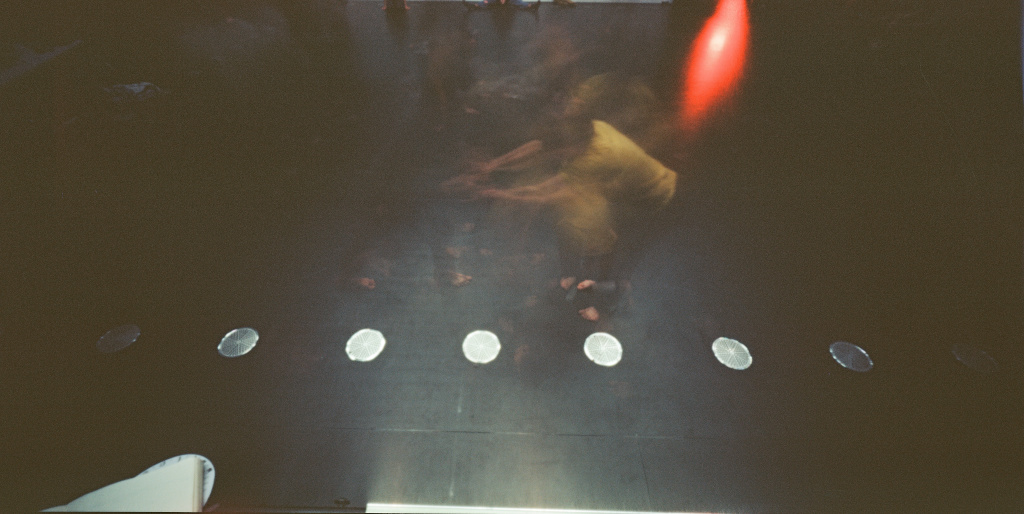
The first performance with Jo was at 4:34pm. Total exposure time 2 minutes and 45 seconds. You can see how a contra-balance of the two dancers is evident as it was a stillness in the routine which was held. Generally, as I had light coloured clothing – a yellow t-shirt then this is prominent in all the images. As are feet and other areas of exposed flesh which are light in colour.
The red flame like area at the top of the photo is a reflection on the floor of the red light from a heater. The circular items are metal vent coverings set into the floor of the dance studio. These elements are present in all six photographs.
Photographic record #2 (4:56pm)
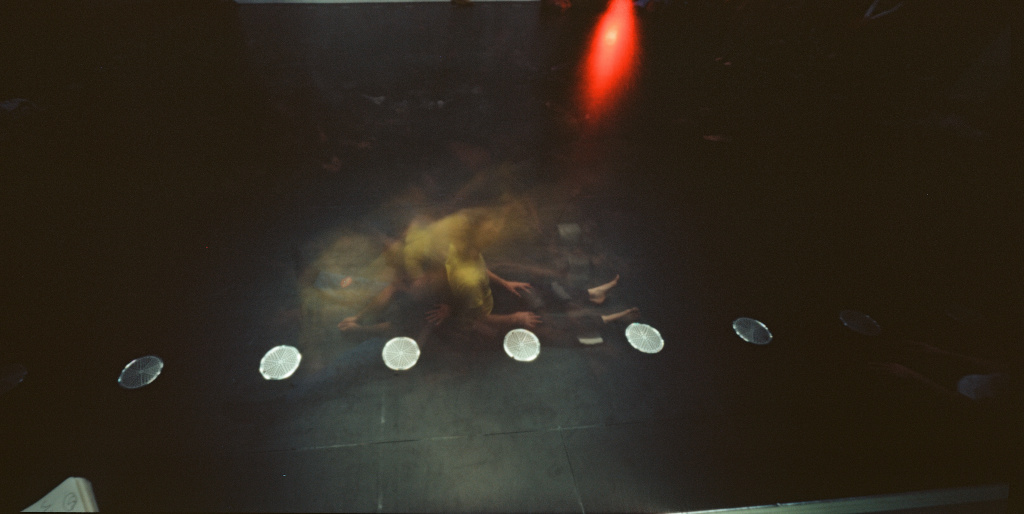
The second performance with Sandy was at 4:56pm. The image shown here suggests considerable floor work, and that sitting back to back formed part – probably the opening – of the dance.
Photographic record #3 (5:03pm)
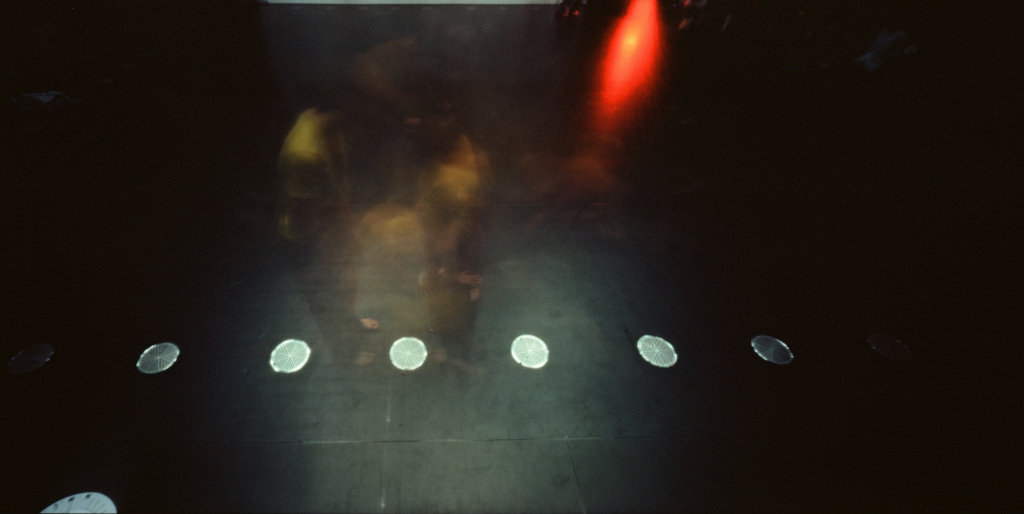
The third performance with Nelson at 4:56pm. In the absence of detailed notes about the movement in the performance then we can only examine the images and suggest it. Here, two standing figures are evident. However you’ll also notice how there is lightness in the tone on the floor. This is actually the accumulated reflection of light reflected from the moving bodies. So there is a residual even though no particular body or part of the body can be identified.
Photographic record #4 (5:08pm)
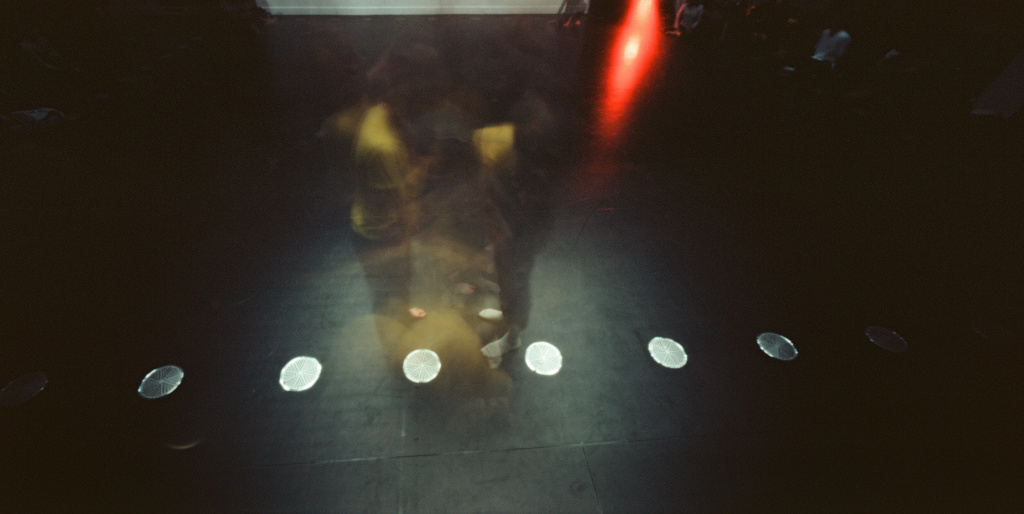
The fourth performance with Ash at 5:08pm. It seems likely Ash was wearing white socks in this performance as you’ll notice my bear feet and another set of feet that are apparently wearing white socks! There might also have been a back lift but I can’t be sure that this happened in this particular performance. Equally, one or more of the six performances included a lift and this might be present here! Further documentation of the performances beside the photographic record is needed to understand the movement which occurred.
Photographic record #5 (5:24pm)
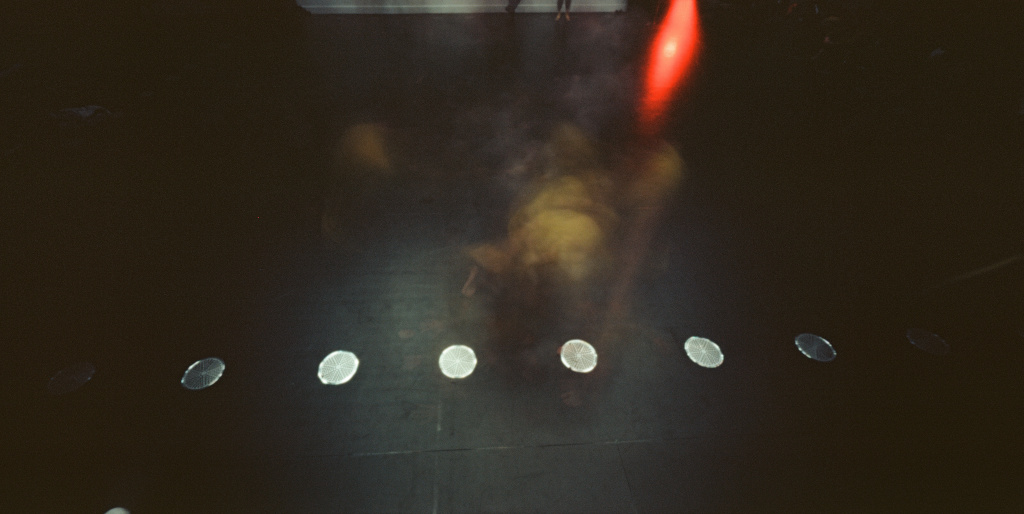
The fourth performance with Viraj at 5:24pm. Looking at the image here, most of the dance seems to have been on the right hand side. This suggestion comes from the abundance of yellow on the right and its absence on the left.
Photographic record #6 (5:30pm)
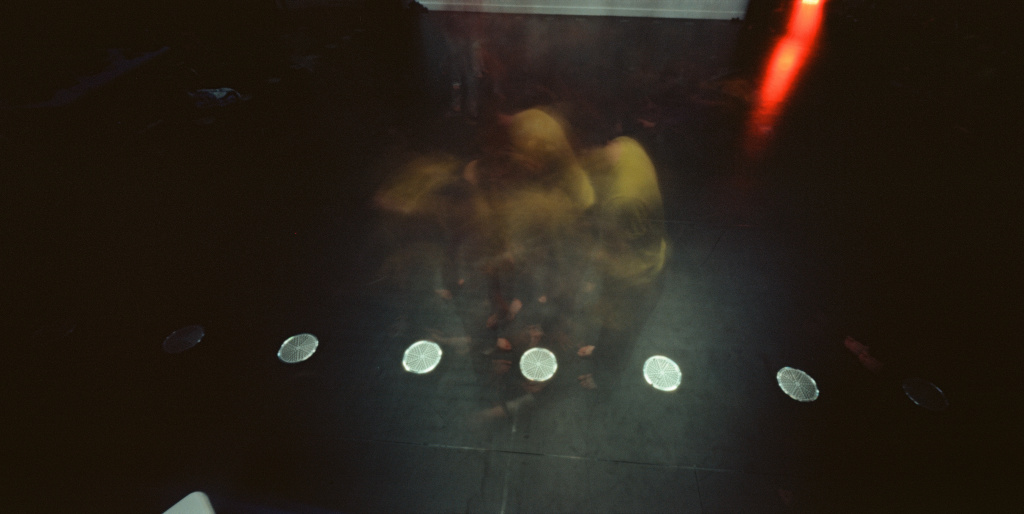
The fourth performance with Tobias at 5:30pm. This performance included much standing still and walking. You can see this in the multitude of feet in this image.
Conclusion – next steps!
Now that I have a sense of the resulting images rendered in a long exposure photograph then there a couple of avenues for further research. One is the development of scores to particularly create a photographic outcome with long exposures. Thus a score would accompany each image.
Another is to record the performance on video while also rendering it onto photographic film as has been done here. The resulting video would accompany each image.
Finally, what conceptual framework could be suggested to reconcile the image and movement in a coherent and overarching narrative/ explanation. What are the theoretical under-pinnings which could give rise to it?
Notes
The clock time given above is from my wrist watch which was set about 10 minutes faster than the ‘real’ time. So 5:40pm is actually 5:30pm!
